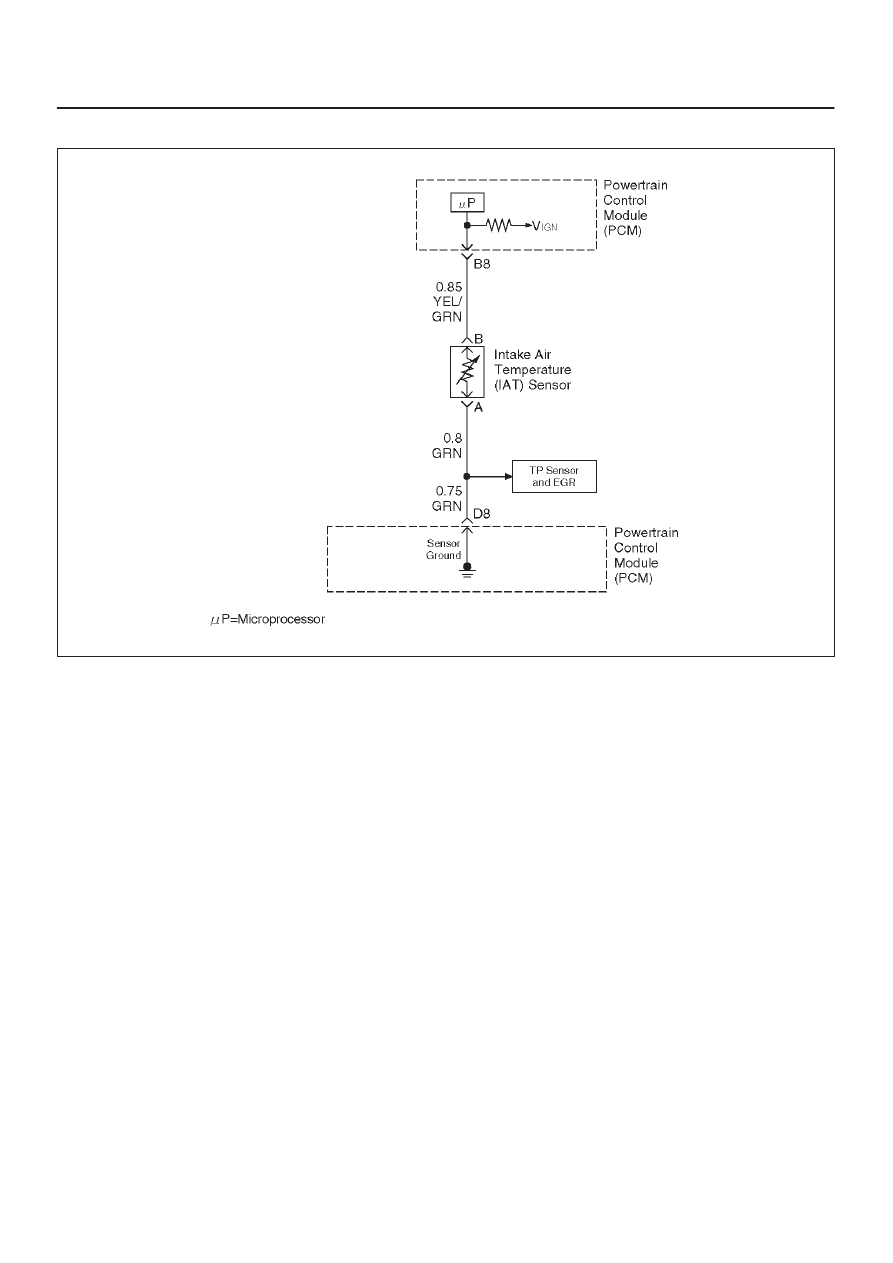Content .. 2135 2136 2137 2138 ..
Opel Frontera UBS. Manual - part 2137

6E–121
ENGINE DRIVEABILITY AND EMISSIONS
Diagnostic Trouble Code (DTC) P0113 IAT Sensor Circuit High Voltage
D06RW026
Circuit Description
The intake air temperature (IAT) sensor is a thermistor
which measures the temperature of the air entering the
engine. The powertrain control module (PCM) applies 5
volts through a pull-up resistor to the IAT sensor. When
the intake air is cold, the sensor resistance is high and the
PCM will monitor a high signal voltage on the IAT signal
circuit. If the intake air is warm, the sensor resistance is
lower causing the PCM to monitor a lower voltage. DTC
P0113 will set when the PCM detects an excessively high
signal voltage on the intake air temperature sensor signal
circuit.
Conditions for Setting the DTC
D
The engine has been running for over 4 minutes.
D
Vehicle speed is less than 20 mph (32 km/h).
D
ECT signal temperature is above 60
°
C (140
°
F).
D
Mass air flow is less then 20 g/second.
D
IAT signal voltage indicates an intake air temperature
less than –39
°
C (–38
°
F) for total of 12.5 seconds over
a 25-second period.
Action Taken When the DTC Sets
D
The PCM will illuminate the malfunction indicator lamp
(MIL) the first time the fault is detected.
D
The PCM will store conditions which were present
when the DTC was set as Freeze Frame and in the
Failure Records data.
Conditions for Clearing the MIL/DTC
D
DTC P0113 can be cleared by using the Tech 2 “Clear
Info” function or by disconnecting the PCM battery
feed.
Diagnostic Aids
Check for the following conditions:
D
The IAT sensor shares a ground with the EGR position
sensor and the TP sensor. Check the ground if these
DTC’s are set.
D
Poor connection at PCM – Inspect harness connectors
for backed-out terminals, improper mating, broken
locks, improperly formed or damaged terminals, and
poor terminal-to-wire connection.
D
Damaged harness – Inspect the wiring harness for
damage. If the harness appears to be OK, observe the
IAT display on the Tech 2 while moving connectors and
wiring harnesses related to the IAT sensor. A change
in the IAT display will indicate the location of the fault.
If DTC P0113 cannot be duplicated, the information
included in the Failure Records data can be useful in
determining vehicle mileage since the DTC was last set.
Test Description
Number(s) below refer to the step number(s) on the
Diagnostic Chart:
2. Verifies that the fault is present.